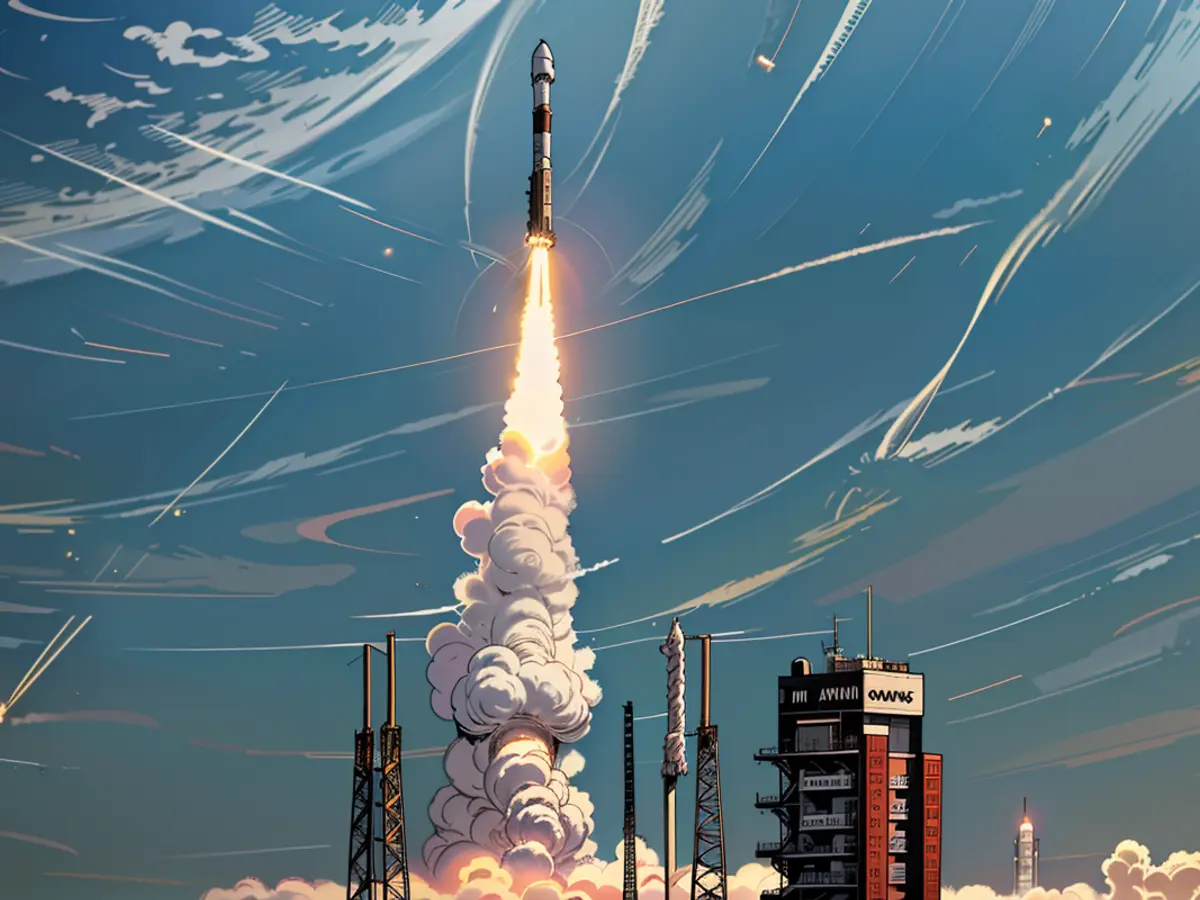Journeying through space. - "Starliner" undertakes its maiden voyage with onboard personnel.
Following a series of setbacks, the long-delayed spacecraft "Starliner" has finally taken off on its crewed inaugural journey to the International Space Station (ISS). Strapped in with NASA astronauts Barry Wilmore and Suni Williams, the spacecraft blasted off from Cape Canaveral Space Force Station, Florida, aboard a "Atlas V" rocket, as seen in real-time footage provided by the US space agency NASA. "C'mon, Atlas! Fly high, Starliner!" were the last words heard from the control room prior to lift-off.
As NASA Administrator Bill Nelson exclaimed, "Two bold NASA astronauts are en route on this pivotal first test mission of a brand-new spacecraft." Developed by Boeing, the "Starliner" signifies the dawn of a new era in American space exploration. "Buckling up for a daring endeavor - that's why it's worthwhile. This is an exciting time for NASA, our business partners, and the future of discovery," he added.
A history of postponements
This test flight had been rescheduled multiple times on account of various technical issues with both the spacecraft and rocket. It was called off twice in the recent past mere minutes before it was slated for takeoff, with problems stemming from a helium leak and a dodgy ground computer system.
The capsule-equipped "Starliner" - distinct from SpaceX's "Crew Dragon" in that it lands on land rather than water - is anticipated to rendezvous with the ISS on Thursday, with Wilmore and Williams remaining aboard for approximately a week.
A glimpse inside the spacecraft
The 58-year-old Williams and the 61-year-old Wilmore, both of whom have previously traveled to space on separate occasions, expressed awe at their return to the ISS. "It feels almost unreal," Williams shared, with the "Starliner" having been relocated to a new docking berth at the ISS to accommodate the "Crew Dragon" capsule.
A vital replacement part was snuck aboard the "Starliner": a urine pump at the ISS had malfunctioned prematurely, responsible for converting urine from astronauts into potable water. As the ISS possessed a temporary backup option, a replacement part was hurriedly acquired and crammed into the "Starliner" - thereby sacrificing the bags of clothes and hygienic essentials belonging to astronauts Williams and Wilmore. Nonetheless, there was an ample supply of apparel and self-care items on board the ISS that would suffice for the pair.
Back in May 2022, the "Starliner" designed and manufactured by Boeing achieved its initial successful, uncrewed journey to the ISS, spending four days there, signaling a significant milestone. Its first test with no astronauts in 2019 was not even close to reaching the ISS.
In the future, the "Starliner" aims to carry astronauts to the ISS, as a supplement to the "Crew Dragon" capsule from SpaceX. However, the project is running substantially behind schedule, while the "Crew Dragon" has been steadily ferrying astronauts to the ISS for some time.
Read also:
- The USA is eagerly anticipating the maiden voyage of Boeing's "Starliner" to the International Space Station (ISS).
- Upon successful completion of this test flight, "Starliner" may serve as a partner for NASA in facilitating space travel to the ISS.
- The "Starliner" is not the only spacecraft making headlines; SpaceX's "Crew Dragon" has been a reliable vessel for transporting astronauts to the ISS.
- As "Starliner" orbits Earth, American space exploration continues its quest for new frontiers, drawing close collaboration with NASA.
- Despite the technical issues that necessitated a postponement of its launch, the "Starliner" finally embarked on its mission with astronauts Barry Wilmore and Suni Williams aboard.
- The future of space travel seems ever-evolving, with the USA in the lead, thanks to spacecraft like "Starliner" and "Crew Dragon."
- Florida's Cape Canaveral Space Force Station has gained significance as a launchpad for groundbreaking space missions, including Boeing's "Starliner" and SpaceX's "Crew Dragon."
- Bill Nelson, NASA Administrator, expressed his pride in the NASA astronauts who boarded "Starliner" for this landmark test flight, underscoring the importance of space travel for science and discovery.
- Although the "Starliner" is a unique spacecraft, it shares a common goal with SpaceX's "Crew Dragon" - both aim to further human exploration of the cosmos.
- With countries like Russia, China, and Japan also pursuing space travel, the USA is determined to maintain its position as a leading nation in the realm of space exploration.
- The two-person crew of the "Starliner" exemplifies the bravery and determination of astronauts from around the world who embark on such hazardous yet rewarding missions, as evidenced by Suni Williams and Barry Wilmore.
- As the "Starliner" successfully undertakes its debut voyage, it promises to bring happiness, progress, and a renewed sense of wonder to the world of space travel and exploration.







